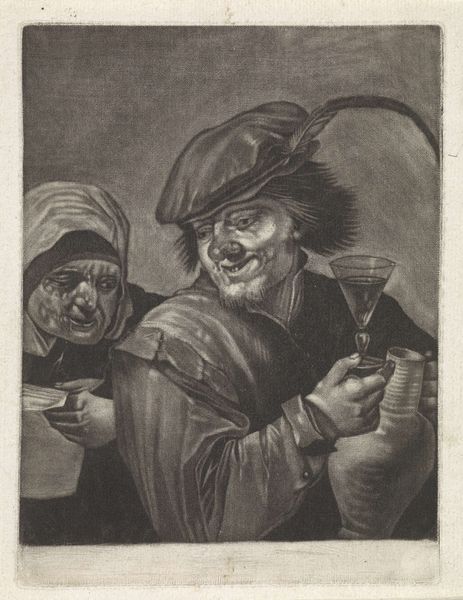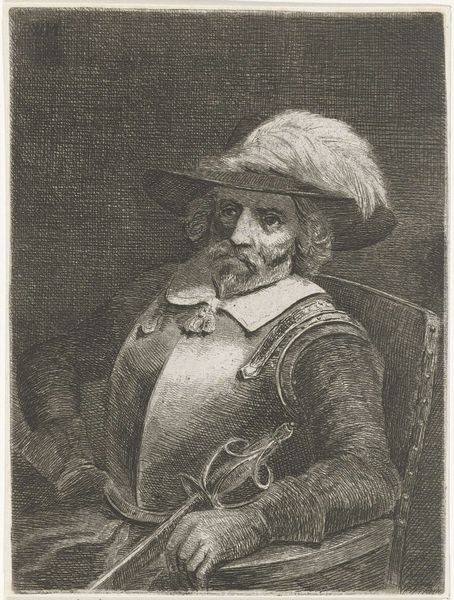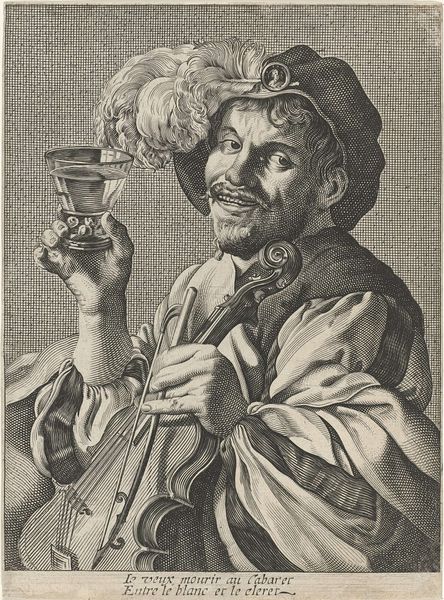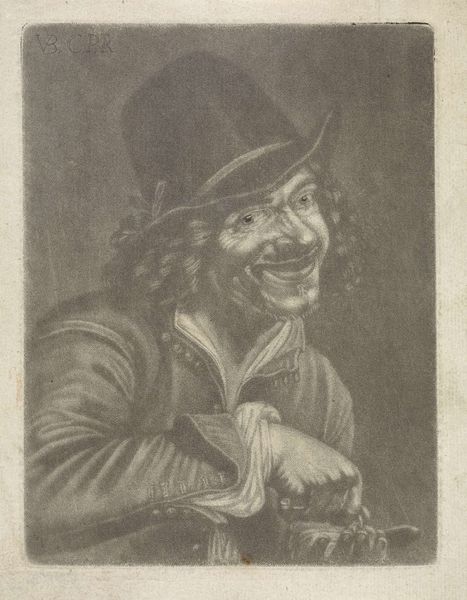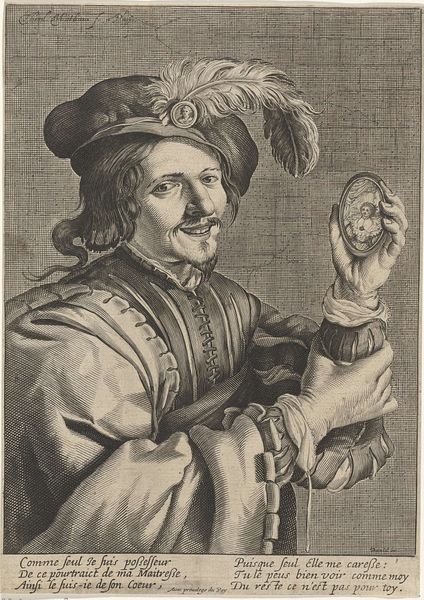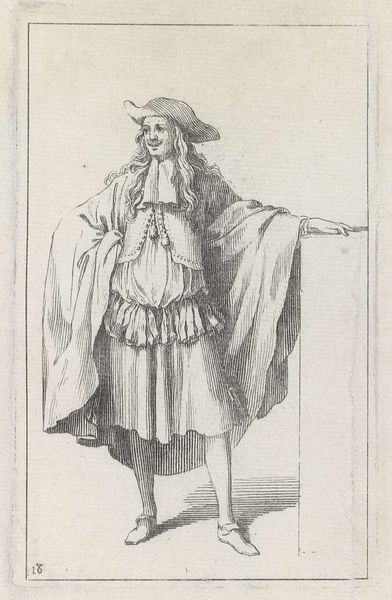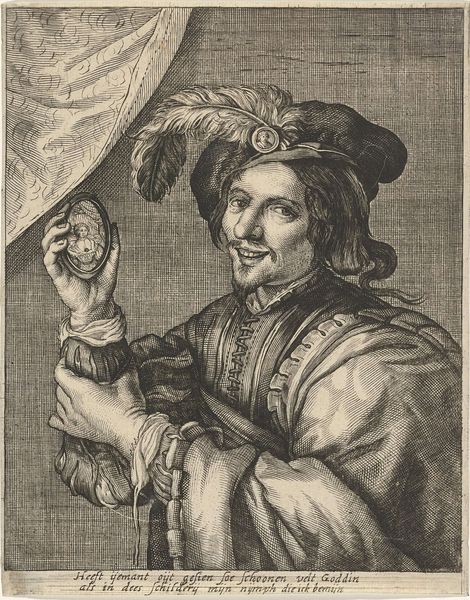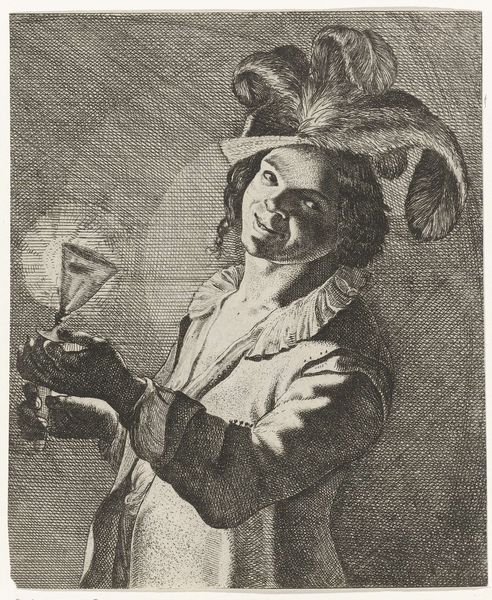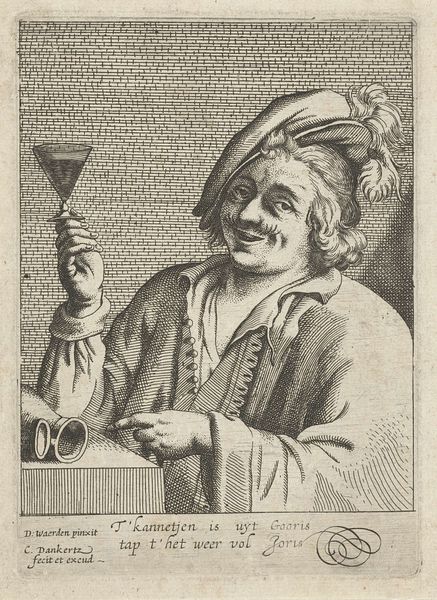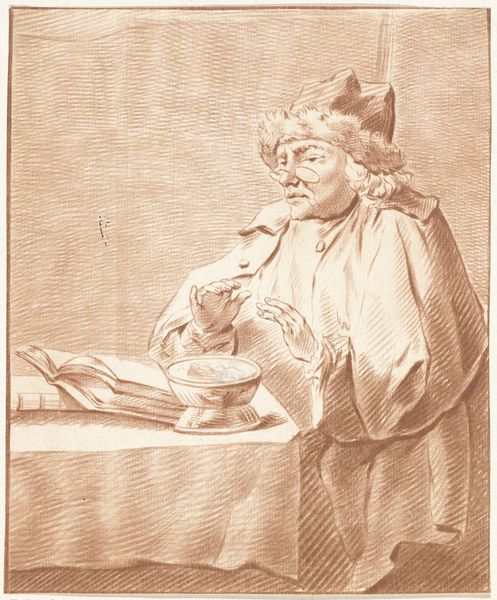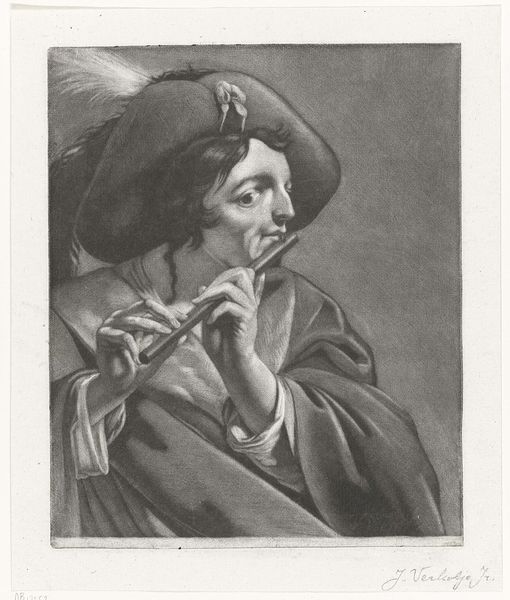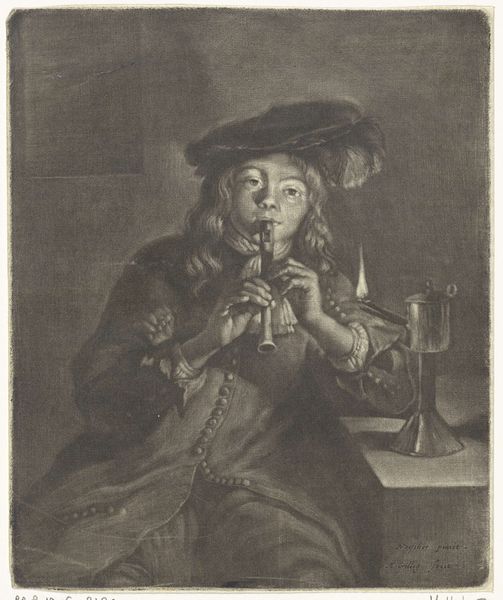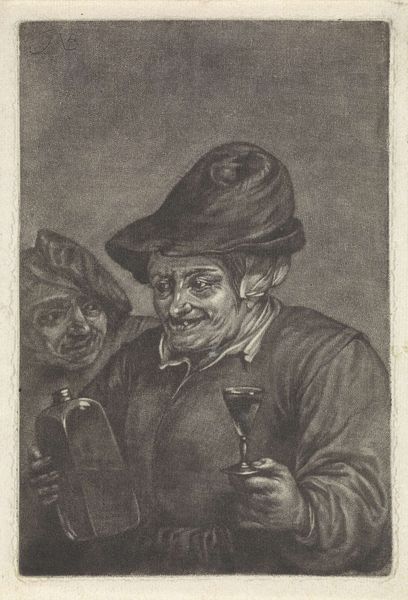
glass, engraving
#
portrait
#
facial expression drawing
#
baroque
#
dutch-golden-age
#
old engraving style
#
form
#
glass
#
portrait reference
#
portrait drawing
#
engraving
Dimensions: height 210 mm, width 170 mm
Copyright: Rijks Museum: Open Domain
Editor: This is “Boy with an Inverted Glass” by Theodor Matham, dating from 1625 to 1629. It's an engraving and currently resides in the Rijksmuseum. The boy’s expression is just so striking – a mixture of smugness and maybe even a little mischief. What's your take on it? Curator: It’s important to understand these images within the context of the Dutch Golden Age. What role did engravings play in shaping public opinion and disseminating information? The elaborate attire and theatrical pose of the boy hint at a connection with wealth and social status. But then consider the inverted glass. Is it a symbol of vanitas, the fleeting nature of earthly pleasures, made fashionable in broader artistic and socio-political discourses by artists like Hals and Rembrandt? Editor: Vanitas…interesting. So, his playful smirk might actually be masking a deeper commentary on the transience of life and wealth? I was drawn to the engraving as a simple portrait. But you are placing the piece in the flow of Dutch history, suggesting an allegory? Curator: Precisely. And think about the function of the image. Prints like these were not just artistic expressions, but often functioned as advertisements or propaganda. Can we consider the location in Rijksmuseum to change how audiences percieve art today, shifting from advertisement and into a work of art? Editor: I never thought about it that way. Shifting socio-political status can also happen for artistic expression over time. This makes me wonder about Matham himself - what sort of societal position was he occupying as an artist at the time? Curator: It prompts us to question how cultural and economic forces can propel art to higher planes in cultural value. Considering the piece as a tool in the social arena definitely adds depth. Editor: Definitely gives a different lens on how to think about 17th century portraiture and Dutch societal currents. Thank you!
Comments
No comments
Be the first to comment and join the conversation on the ultimate creative platform.

